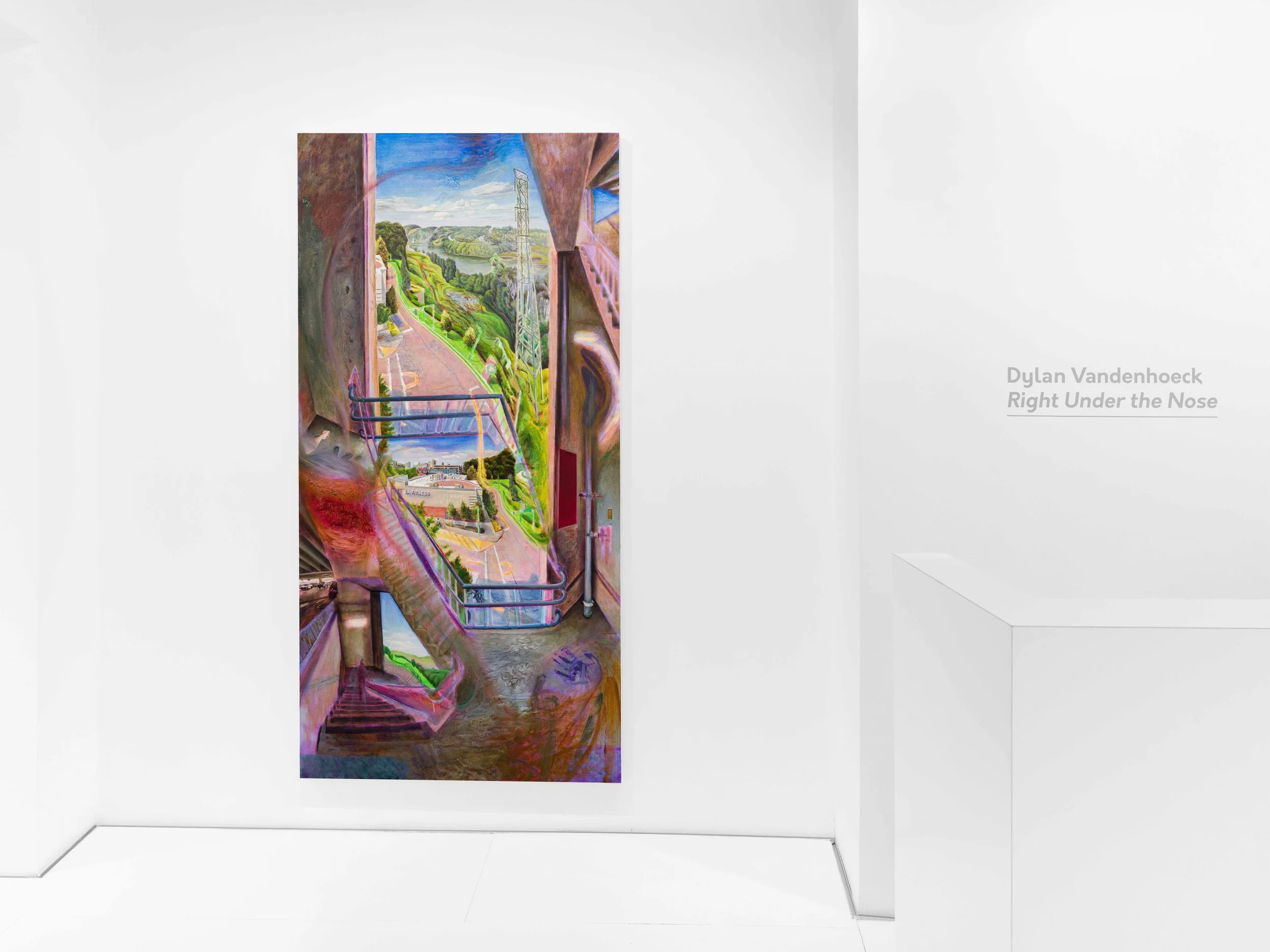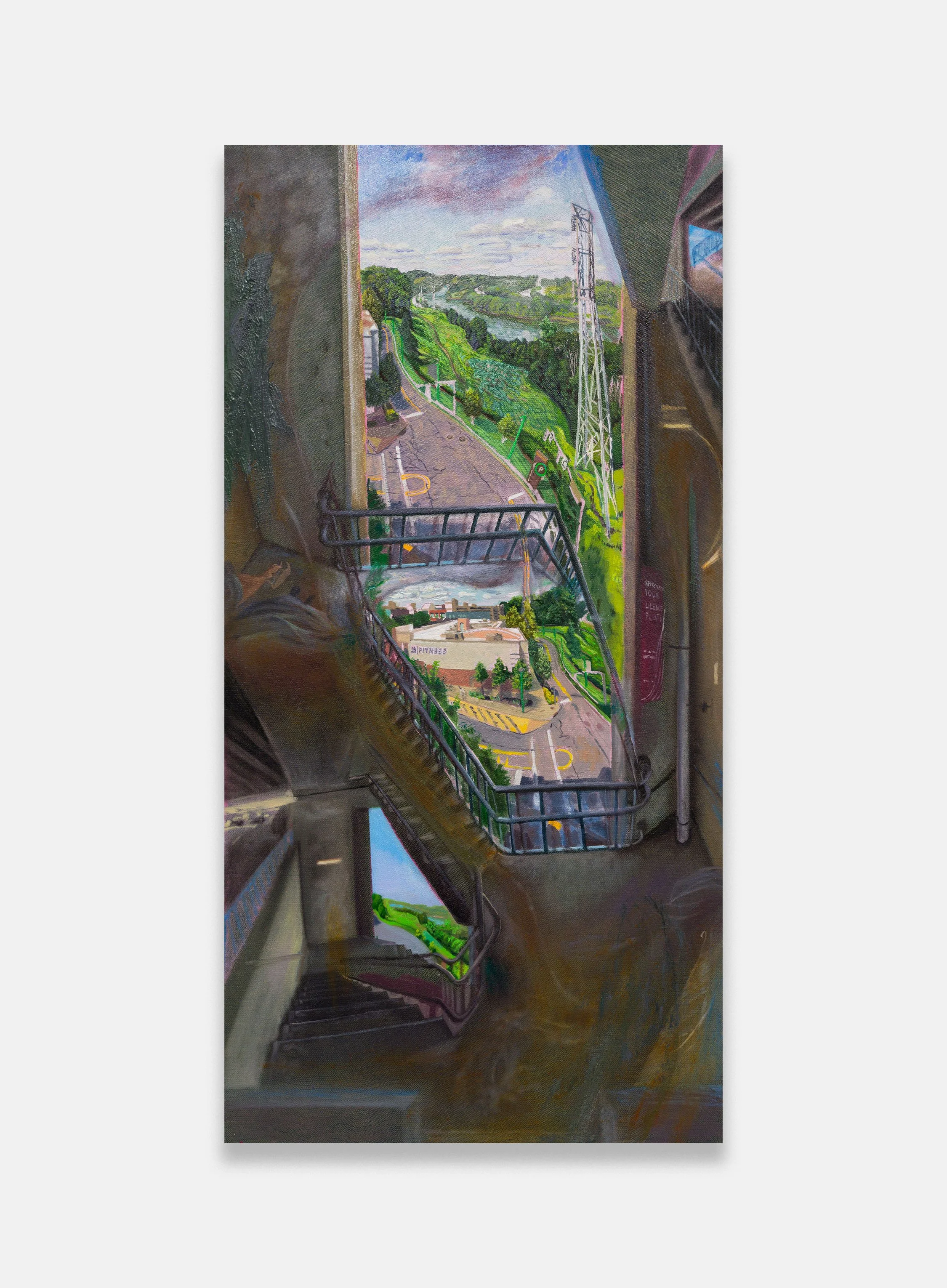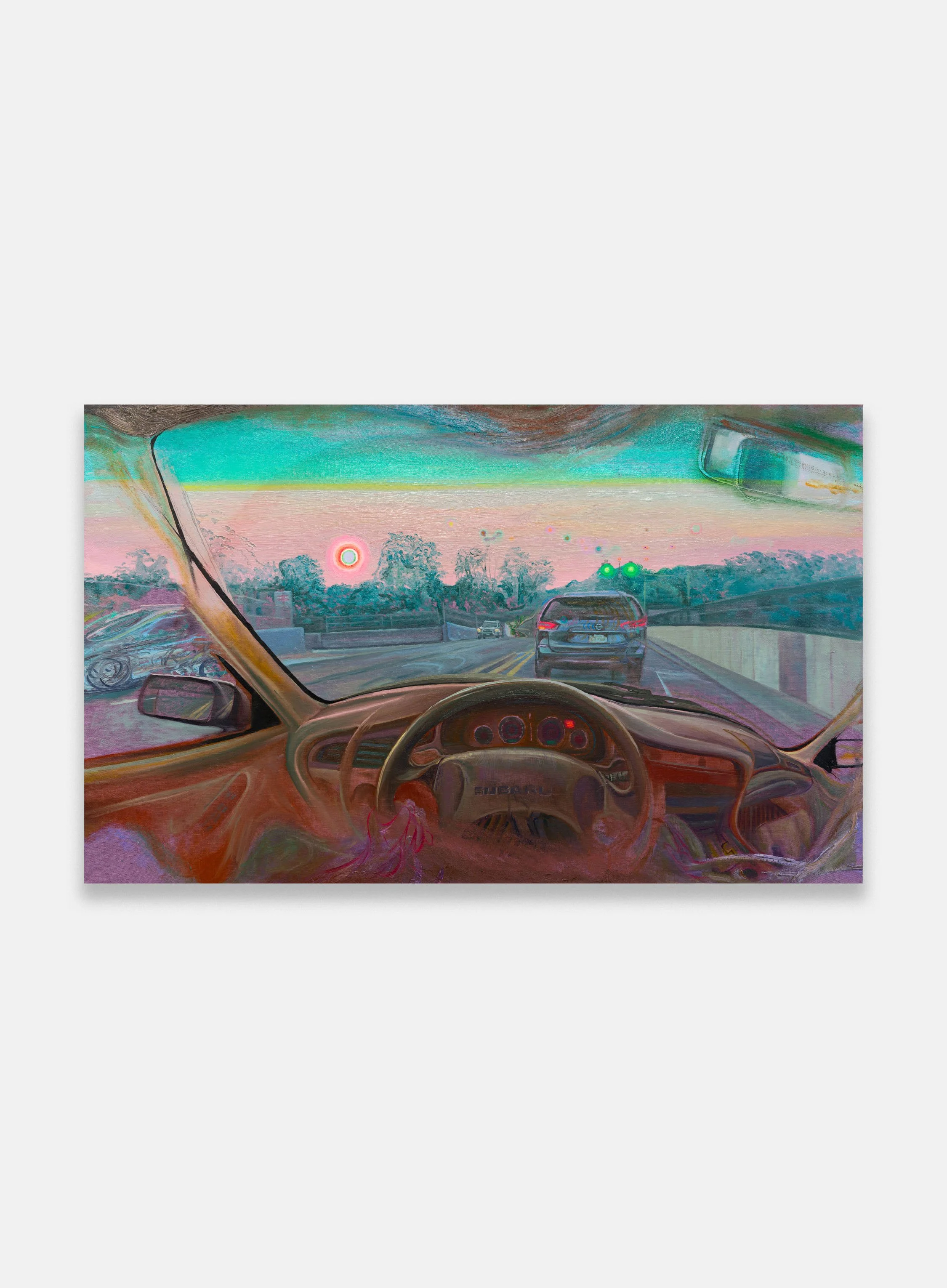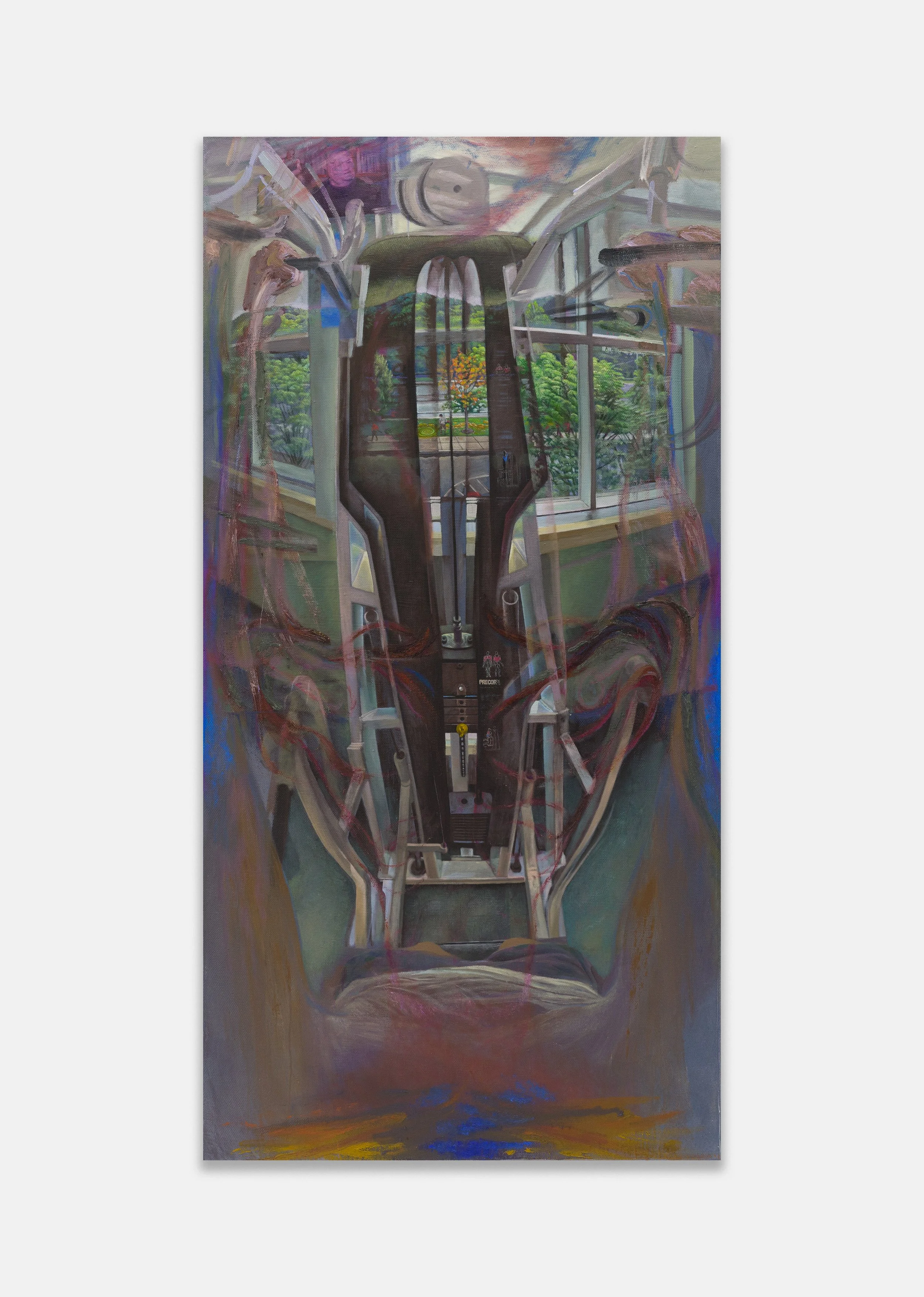Dylan Vandenhoeck
Right Under the Nose
May 17 - June 22, 2024
Jack Barrett is pleased to present Right Under the Nose, gallery artist Dylan Vandenhoeck’s third solo exhibition with the gallery, on view from May 17th through June 22nd, 2024.
One of the important features of the Western European modern world that begins to emerge in the decades around the year 1500 is a reorganization of the human senses. Taking place over several hundred years is a relentless prioritization of vision and its isolation from the other senses. What some theorists have called "ocularcentrism" is this privileging of the eye and its alignment with rationalized forms of knowledge that distance a human observer from the physical world and estrange them from the multi-sensory immediacy of perception. Since the Renaissance, the arts have been shaped by practices and techniques that have posed the fiction that our vision is a faithful mirroring of an objective external reality. This model has been a crucial underpinning for the rationalized forms of knowledge and utilitarian, extractive priorities of Western modernity. But there have long been artists whose counter-practices have challenged this dominant framework, including, for instance, Hans Holbein and his Ambassadors, William Blake, J M W Turner, Roberto Matta and Stan Brakhage.
Dylan Vandenhoeck is part of this lineage for the ways in which his work foregrounds the embodied, or subjective nature of our vision. One of many examples of embodied vision is the fact that our optical impressions are shaped by the actual curvature of our spherical eyeballs. Yet the most pervasive systems of visual representation, such as linear perspective, have "corrected" this phenomenon by imposing rectilinear organizations onto perceptual experience. Another feature of lived vision to which Vandenhoeck is attentive are afterimages, the response of our eyes (as part of our nervous system) to strong stimulation of various kinds, but notably sunlight. Afterimages are vivid evidence of how our vision is a composite of sensations produced by our body and of the diverse effects of the luminous environment in which we are situated. His paintings present this hybridity as a heterogenous field of divergent events with different temporalities, but which nonetheless coalesce into the dynamic world of immediate experience. Using the terms of Deleuze and Guattari, Vandenhoeck creates a smooth space as opposed to a striated one, that is, non-metric, de-centered and open to metamorphoses.
Around the Mound, for example, manifests some of these qualities in its disturbance of conventional spatial cues, such as altering our reading of what is near and far. It affirms an aggregate field of vision composed of perceptual fragments that don't cohere into a unified whole. But notably, while Vandenhoeck has crafted a landscape shaped by these disjunctions, he has also interwoven into the work swirling and pulsating flows that engage the viewer kinesthetically. Part of his project is to challenge the ways in which our attentiveness has been regulated and impoverished by the digital milieus in which we are perpetually immersed. The monotonous omnipresence of electroluminescent color and powerful forms of perceptual control, such as eye tracking, have routinized and diminished our visual capacities. Vandenhoeck conveys intimations of the sensory and libidinal gratifications of a heightened bodily response to the vibrant plurality of a living world. In this sense, there is at least a limited utopian underpinning to the images in this show. Yet if one dimension of his work poses the possibility of revivifying our perception, he makes clear that this can only occur within the broken actualities of the early twenty-first century. His revelatory images are all grounded in the prosaic periphery of New York City, marked by highways, shopping malls, and cell phone towers. Thus, one of Vandenhoeck's remarkable achievements is the reclaiming of an expanded, transfigured vision amid the familiar terrain of the everyday.
– Jonathan Crary
Dylan Vandenhoeck Along the Army Corps Floodwall in Ardsley in Autumn, 2023-24 Oil on linen 66 x 96 inches
Dylan Vandenhoeck Architect's Office, 2024 Oil on grey linen 66 x 41 inches
Dylan Vandenhoeck LA Fitness in Ridge Hill by the Sprain Brooke in Summer (Plein Air Study), 2023 Oil on colored linen mounted on wood 40 x 20 inches
Dylan Vandenhoeck Around the Mound by the Soccer Field and Cell Tower, Summer, 2023-24 Oil on colored linen mounted on wood 30 x 40 inches
Dylan Vandenhoeck The Saw Mill River / 87 Through the Bridge Fence, 2023-24 Oil on wood panel 30 x 12 inches
Dylan Vandenhoeck NYSC by the Saw Mill River in Winter, 2024 Oil on linen 66 x 80 inches
Dylan Vandenhoeck Walking Along the Stream in Pound Ridge/Winterberry at Dusk, 2024 Oil on colored linen 26 x 58 inches
Dylan Vandenhoeck Walking Alongside the Golf Course in Ardsley-on-Hudson Near Sunset and After, 2023-24 Oil on colored linen 66 x 41 inches
Dylan Vandenhoeck Setting Sun with Entoptic Phenomena During the Canadian Wildfires in Sean’s Subaru, 2023-24 Oil on colored linen 25 x 41 inches
Dylan Vandenhoeck First Leaves to Fall/Assisted Pull up Machine View Towards the Saw Mill River, 2023-24 Oil on linen 86 ½ x 43 inches
Dylan Vandenhoeck LA Fitness in Ridge Hill by the Sprain Brooke in Summer, 2023-24 Oil on linen 86 ½ x 43 inches
Dylan Vandenhoeck DeCicco and Sons Parking Lot Afterimages in the Spring, 2022-24 Oil on colored linen 41 x 25 inches
Dylan Vandenhoeck Walking Around Chopt Creative Salad Company by the Saw Mill River in the Fall, 2023-24 Oil on colored linen 66 x 41 inches





























